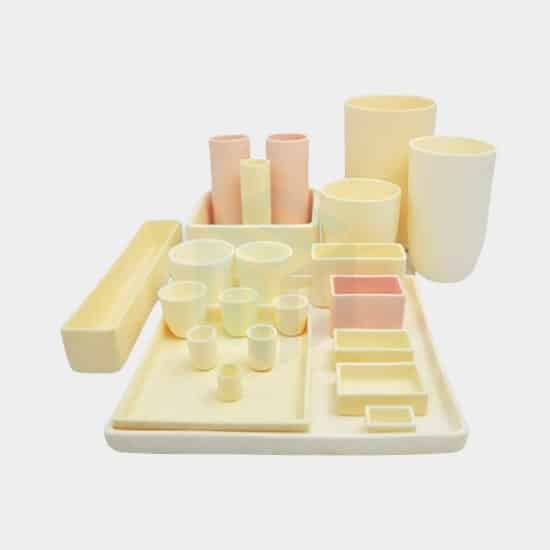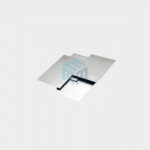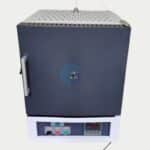Alumina crucibles are commonly used in high-temperature applications due to their excellent thermal and chemical properties. They can withstand temperatures up to 1800°C and are highly resistant to thermal shock. In this blog, we will discuss how to use alumina crucibles at high temperatures for long-term use.
Proper handling and storage
Alumina crucibles are fragile and can easily crack if mishandled or dropped. It is important to handle them with care and avoid any sudden impacts or jolts. During storage, they should be kept in a dry and clean environment to prevent any contamination or damage.
Preheating
Alumina crucibles should be preheated gradually to avoid thermal shock. Rapid temperature changes can cause cracking or even complete failure of the crucible. It is recommended to heat the crucible slowly at a rate of 100°C per hour until it reaches the desired temperature.
Cleaning
Before using alumina crucibles at high temperatures, it is important to clean them thoroughly to remove any impurities or residues. Any foreign material on the surface of the crucible can cause contamination or blockages during use. A combination of solvents, detergents, and/or acid solutions can be used to clean the crucible. However, it is important to note that the cleaning process should not damage the crucible.
Avoid thermal cycling
Repeated thermal cycling can cause stress on the alumina crucible and lead to cracking or even complete failure. To avoid this, it is recommended to use the alumina crucible at a steady temperature without any sudden changes.
Proper support and placement
When using alumina crucibles at high temperatures, it is important to ensure proper support and placement to prevent any bending or warping. The crucible should be placed on a stable and level surface, and any clamps or supports used should be made of materials that can withstand high temperatures.
Cooling
After use, it is important to cool the alumina crucible slowly to avoid thermal shock. Rapid cooling can cause cracking or even complete failure of the crucible. It is recommended to allow the crucible to cool gradually at a rate of 100°C per hour until it reaches room temperature.
Avoid chemical reactions
Alumina crucibles can react with certain chemicals, leading to corrosion or contamination. It is important to avoid using the crucible with any chemicals that can react with alumina, such as hydrofluoric acid or strong alkaline solutions.
Avoid mechanical stress
Alumina crucibles are sensitive to mechanical stress and can crack or break under excessive pressure. It is important to avoid any mechanical stress during use, such as stirring the contents of the crucible with a metal rod.
Regular inspection and maintenance
Regular inspection and maintenance can help to identify any cracks or damage to the alumina crucible before it leads to complete failure. It is recommended to inspect the crucible before and after each use, and replace it if any damage is detected.
In conclusion, alumina crucibles are an excellent choice for high-temperature applications due to their exceptional thermal and chemical properties. Proper handling, preheating, cleaning, avoiding thermal cycling, proper support and placement, cooling, avoiding chemical reactions, avoiding mechanical stress, and regular inspection and maintenance are essential to ensure optimal performance and longevity of the crucible. By following these guidelines, you can ensure the safe and effective use of alumina crucibles in your high-temperature applications for long-term use.
M-Kube Enterprise is an Indian company catering customized laboratory products, laboratory consumables, and laboratory solutions in India, Australia, New Zealand, Singapore, Malaysia, South Korea, the USA, Dubai, the Philippines, Indonesia, and Vietnam.






